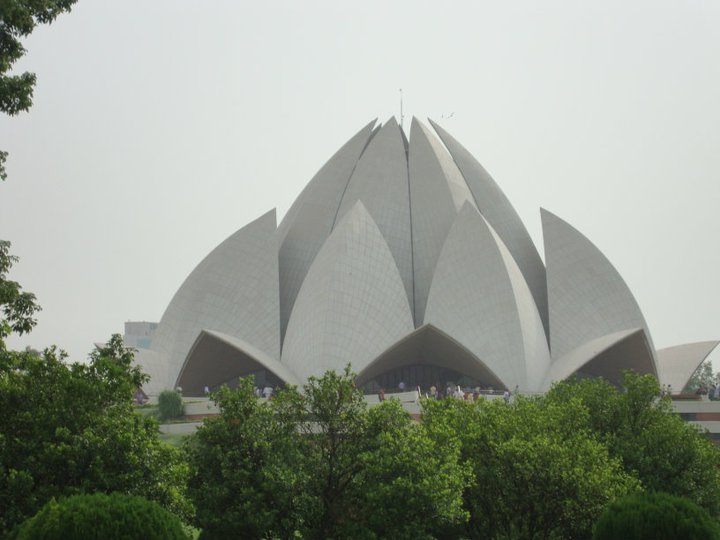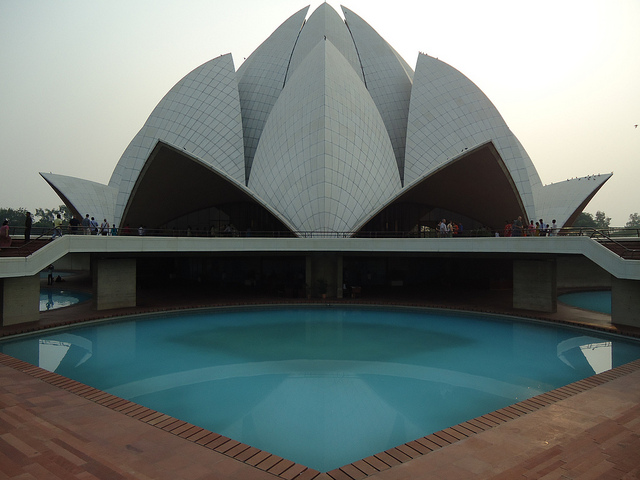Bahai faith represents the equality of mankind and oneness of its soul. The same feeling has been successfully transcended into the beautifully and scientifically degined Bahai Temple, designed by Fariburz Sahba, an Iranian-born Canadian architect, in shape of the lotus flower, symbol of purity throughout India and predominantly celebrates the number nine, which not only represents the highest digit but also unity in the Bahai faith. There are nine pools that have been constructed on the elevated platform signifying the green leaves of the lotus and also serves to cool the stark, elegant interiors of the structure. The delicate and sleek architecture is built in two layers. The first layer consists of nine white marble-covered petals pointing towards heaven, while the second layer of nine petals serves to conceal the portals. When seen from a short distance, it looks like a fabulous example of origami work. The interior, especially, the Hall of Worship, conforms to that of all Bahai temples and is so silent that even a low whisper echoes loudly in the structure. No religious icons are housed here except the copies of the Holy Scriptures and wooden pews. The construction of the temple was completed in 1986.
Timings:
Summer (April to September): 9:00 a.m. to 7:00 p.m., Winter (October to March): 9:30 a.m. to 5:30 p.m. Mondays Closed.


- Central Secretariat is the nearest metro station. An autorickshaw to the temple is easily available.
- It is around 6 kms from the Nizamuddin Railway Station (via Mathura Road). One can take an auto from the prepaid counter at the station.
